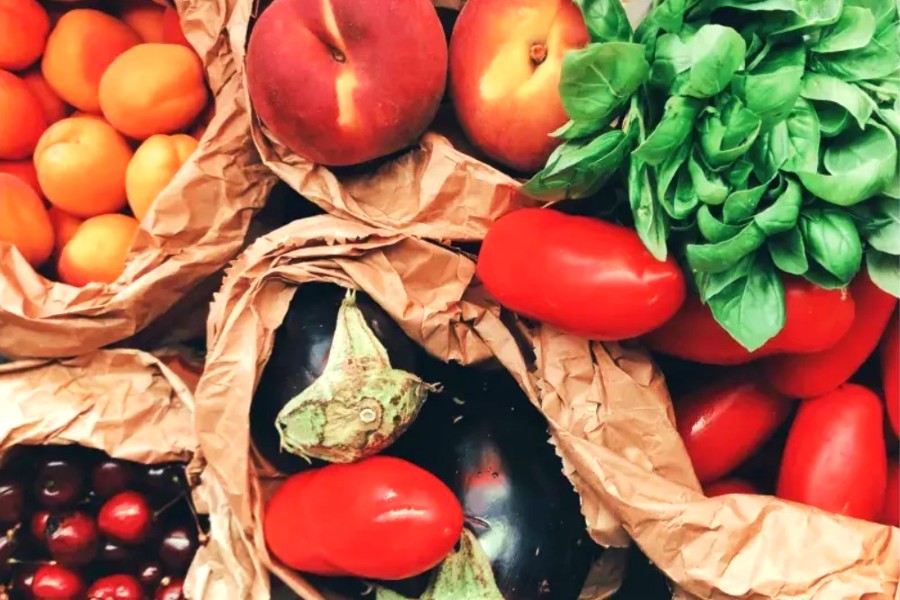
Flavor and nutrition are two elements of good dining that most of the time, for one, seem to fight the other.
Though one would be tempted to gorge on food rich in flavor, laden with fats and sugar, not counting the sodium, the secret to healthy eating lies in the middle path: striking a balance with the customary indulgent flavors and the essential nutrients your body should have. This doesn’t mean that you have to make a compromise with the taste for health’s sake. It is very possible to make delicious and healthy meals that will surely be a treat to your taste with the right approach.
In this article, we will explore how to balance this in your day-to-day meals: from ingredient selection to knowing how to portion, we provide practical tips and strategies so your meals are both packed with flavor and nutrients. We also address a few common queries, such as how to ensure you stay within this balance.
Healthy Snacking
Snacking can be the demise or the healthy side of the diet, depending on choices made. Healthy snacking can help fill the gaps between meals and maintain steady energy levels, which can prevent overeating later. We need to monitor the selection of flavored full snacks with an eye on the nutritional offerings opposed to the empty calories.
Look at a simple but highly nutritious chicken caesar salad sandwich. This snack not only provides the taste of Caesar dressing and juicy chicken, but also the whole-grain bread and leafy greens. Using lean chicken breast keeps the protein high and the fat low, while the Caesar dressing, if chosen prudently or made at home, could be moderate so as not to overload the sandwich with calories. Add this snack to your normal day, and it can contribute to making your nutrition well-rounded — and do it with the flavors
Tip 1: Whole Foods over Processed Snacks
Choose whole snacks instead of processed snacks—items such as fruit, vegetables, nuts, and seeds. These whole food alternatives offer a generous serving of vitamins, minerals, and fiber without added sugars, unhealthy fats, and preservatives, which are typical of many processed snacks.
When there is a source of protein, like mixing a handful of almonds with an apple or a dollop of Greek yogurt with some berries, energy tends to last longer, and it keeps you feeling more satisfied longer.
Tip 2: Control Your Portion Size
Snack the smart way: The key to snacking is portion control. Even healthy snacks can lead to weight gain due to the quantity that one is willing to let themselves take. Measure out snack portions with small bowls or containers; avoid eating from a package to avoid overeating. You’ll feel satisfied with less food if you eat slowly and savor each bite.
Tip 3: Spice it Up
Variety is the spice of life, and it’s no different for snacking. Try to match interesting wagons of flavor with your snacks. Try something sweet with a savory taste, like a slice of an apple with a small piece of cheese, or spicy and tangy, like carrot sticks with hummus. Look at varying flavor combinations to make healthy snacking more exciting and less monotonous.
Tip 4: Emphasize Protein
Protein is the very base of tissues building and preparation; hence it comprises part of any balanced ration. Foods that come under lean proteins are foods like chicken, fish, tofu, and legumes. While preparing meals, make proteins a central part of the dish. For example, a filet of grilled salmon with vegetables or a stir-fry whose main ingredient is beans. Adding a source of protein in every meal will help one stay full for longer and save the mass of muscles, especially if the individual is an active person.
Tip 5: Include Complex Carbohydrates
Carbohydrates are the largest energy source for the body. Even so, not all carbohydrates are equal. The complex carbohydrate from whole grains, vegetables, and legumes can provide a long-lasting energy source. It is very high in fibers that help in smoother digestion. You should opt for whole grains instead of refined ones, and the more vegetables you include, the higher the nutritional value.

Tip 6: Don’t Forget Healthy Fats
Healthy fats, found in avocados, nuts and seeds, and olive oils, are crucial not just for maintaining a healthy heart, but also in the production of hormones in the body. They also help in transporting fat-soluble vitamins that are crucial for the body: A, D, E, and K. Supercharge your meal with a little healthy fat by adding sliced avocado to a salad, drizzling olive oil over roasted vegetables, or sprinkle chia seeds onto a morning smoothie.
Tip 7: Add Herbs and Spices
A kitchen is almost nothing without the herbs and spices—a feature that can make one dish different from another, flavorfully, without adding calories. Both fresh herbs like basil, cilantro, and parsley and dried spices like cumin, turmeric, and paprika are used in seasoning meats, vegetables, or grains. Mix and match to create different flavor profiles so your meals don’t get boring.
- LISC CEO Michael T. Pugh Recognized Among 2024 Worthy 100 Leaders
- NY Lawmakers Celebrate Historic MENA Data Recognition Bill Signed By Hochul
- Sponsored Love: Leadership Skills Training Courses: Invest In Your Future Today
- Senator Hoylman-Sigal Calls On Independent Schools To Adopt NYC Public School Calendar
- Mayor Adams Celebrates 65 Million NYC Visitors In 2024, Second-Highest Ever
Tip 8: Opt for Natural Sweeteners
If you like to indulge in sweet treats, then consider the substitution of the natural sweeteners honey, maple syrup, and agave nectar for refined sugars. They aren’t highly processed like their conventional counterparts and often contain trace amounts of vitamins and minerals.
It’s important to use these in moderation, however, because they’re relatively high in calories and can really throw off your blood sugars if that is a concern. Pairing these natural sweeteners with fibrous foods, like oats or fruit, will help slow down the absorption of the sugar in your bloodstream.
Tip 9: Play with Cooking Techniques
The way you prepare your food can considerably affect not only the taste but also its nutritional value. For example, when you grill or roast, vegetables bring out their natural sweetness but still retain the nutrients by steaming. Sautéing with only a little of the healthy fat like olive oil is a means to add flavor but not too many calories. The best frying methods should be avoided, particularly deep frying, and overcooking as those two will predispose foods to lose important nutrients and may pose possible danger from chemicals formed.
Tip 10: Make Friends with Meal Prepping
Meal prepping is the practice of preparing individual components of your meals ahead of time. Most of the time, therefore, has to be spent at the weekend to cook proteins and grains and to chop vegetables. That way, everything should just be thrown into a pan and reheated. Or, a bit of the weekend should be spent having put together freezer meals; then a person might have a week’s worth of something just right.
Keep on hand in the pantry, fridge, and freezer healthy staples like whole grains, canned beans, frozen vegetables, and lean proteins. Having these ingredients handy is very effective for preparing a balanced, quick meal when time is constrained. Consider, also, keeping a few quick nutritious meals or healthy snacks in the freezer for days on which you are too frantically crazy to spend time cooking.
Tip 11: Building Balanced Meals
Building a balanced plate is about much more than throwing together healthy foods. It is important to make sure that with all the meals that you consume, you eat the right amounts of macronutrients (carbohydrates, proteins, and fats) and micronutrients (vitamins and minerals) to help you meet the nutritional goal. On a balanced plate, all the food groups are in a marvelous form of a plethora of foods, all the sizes based on one’s nutritional goal.
Tip 12: Make Smart Choices When Eating Out
There are numerous ways to dine out and adhere to a healthy-eating lifestyle. Consider options on the menu with such features as lean proteins, whole grains, and loads of vegetables. Do not be afraid to ask for modifications like dressing on the side, grilled instead of fried, or extra vegetables in place of starchy sides. Keep portions in check, as well as sharing a dish or packing up half for later.
Tip 13: Meal Planning for Busy Days
Life has a way of getting in the way of our best intentions, and oftentimes busy days can derail our ability to eat balanced meals. However, a little bit of planning and preparation will help you ensure you’re eating good, even on the busiest of days.
FAQs
What are some ideas for both quick and nutritious snacks to ensure my meals are tasty as well as healthy?
Use fresh whole unprocessed foods and healthful methods of preparing and seasoning recipes. Make sure the meals have one food from each food group: lean protein, complex carbohydrate, and a good fat to balance taste and nutrition.
What are some quick and healthy snack ideas?
Any quick and healthy snack would be something like a chicken Caesar salad in a sandwich; Greek yogurt with berries; or a small handful of almonds with an apple. These snacks provide a mixture of proteins, fibers, and healthy fats.
How can I eat healthy when I’m short on time?
Plan your meals in advance, prepare nutritious ingredients, and make smart choices when dining out. Planning ahead will eliminate the need to plan for anything else but nutritious options.
Conclusion
Balancing flavor and proper nutrition shouldn’t be a hassle when preparing a meal. For that reason, this strategy is undertaken through whole food selection, portioning, the usage of different herbs and spices, and cooking methods. So, you can always be sure of very pleasing meals that delight your body and taste buds.
It doesn’t actually matter, whether you are snacking, preparing your meals for a wild week, or perhaps conjuring up that impressive dish—these tips will, in any way, move you in the direction of a healthful and tasty diet that supports your general well-being.
Become a Harlem Insider!
By submitting this form, you are consenting to receive marketing emails from: . You can revoke your consent to receive emails at any time by using the SafeUnsubscribe® link, found at the bottom of every email. Emails are serviced by Constant Contact








